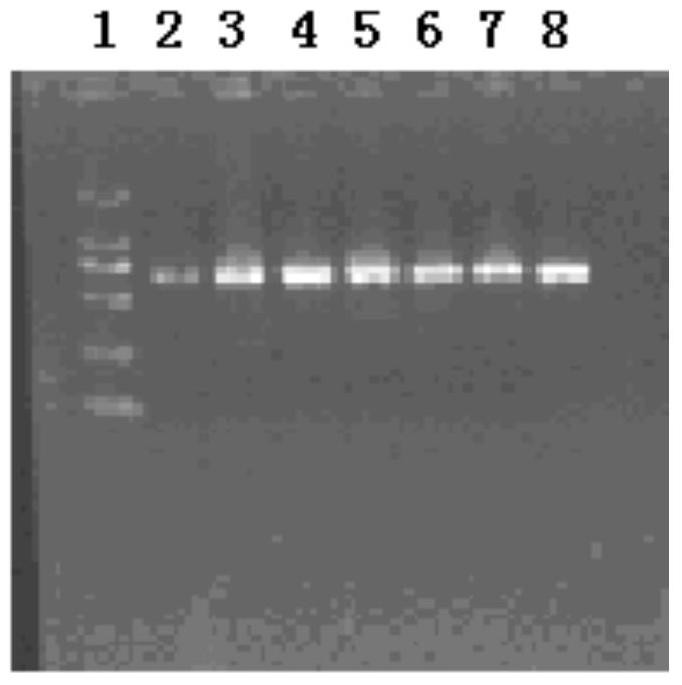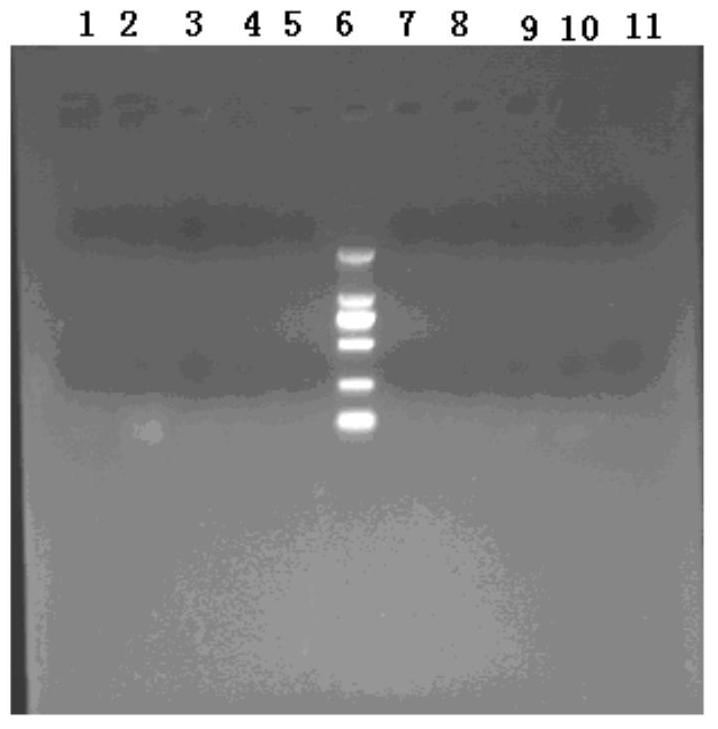Genes related to drug resistance of snakehead intestines and their applications
A snakehead and genome technology, applied in the field of molecular biology, can solve problems such as inability to detect in season, heavy workload, and large land occupation, and achieve the effects of rapid diagnosis, strong practicability, good specificity and sensitivity
- Summary
- Abstract
- Description
- Claims
- Application Information
AI Technical Summary
Problems solved by technology
Method used
Image
Examples
Embodiment 1
[0066] Example 1 Cloning of the ALS gene in the snakehead intestine
[0067] On the NCBI website, search for Compositae plants (Helianthus annuus, accession number AY541454.1), cocklebur (Xanthium sibiricum, accession number U16280.1), Conyza canadensis (accession number HM067014. 1) and the ALS gene of stinky chamomile (Anthemis cotula, accession number JF327754.1) were used as reference sequences, and the ALS gene of Arabidopsis thaliana (accession number AY042819.1) was used for sequence comparison. According to the principles of primer design, the first set of primers was designed using DNA MAN6.0 software, as shown in Table 1.
[0068] Table 1 Primers for amplifying the ALS gene of snakehead intestine (the first group)
[0069] direction serial number sequence 5'-3' F 143 CACCACCAAACCACCCTCTC R 1012 AGCTCCACAAACCGCCTC F 143 CACCACCAAACCACCCTCTC R 1594 AACCCAAAACCCATCGCC F 143 CACCACCAAACCACCCTCTC R 1950 CGTTCTGCCATC...
Embodiment 2
[0119] Example 2 Design of PCR primers for detection of ALS inhibitor herbicide-resistant snakehead intestines
[0120] According to the full-length sequence of the ALS gene of the channa and the principles of primer design, 2 pairs of primers were designed using DNA MAN6.0 software to amplify the full-length ALS gene of the channa, as shown in Table 9.
[0121] Table 9 Amplifies the primers of the ALS gene of the snakehead intestine
[0122]
[0123]
[0124] The PCR amplification system (15 μl) and the reaction conditions are the same as the first group of PCR. Take 3 μl of the PCR reaction solution and use 1% Agarose gel electrophoresis, the temperature gradient amplification result of the primer pair is as follows: Figure 9 , 10 As shown, the amplification effect is good, and the sequencing results show that the ALS gene sequence of the channa chinensis, and the fragment covers eight SNP sites related to drug resistance, A122, P197, A205, D376, R377, W574, S653 and...
Embodiment 3
[0125] Example 3 PCR detection method for the herbicide-resistant ALS inhibitor herbicides
[0126] Experimental materials: Channa sausages collected from different regions.
[0127] Experimental methods: ①Preparation of DNA from Channa sausiata Take 200 mg of fresh leaves of Channa sausiata, grind them with liquid nitrogen, and extract DNA from the leaves of Channa saegosa by conventional CTAB method.
[0128] ② Specific primers used to detect the LC-ALS mutation site in the snakehead intestine, the primer sequences are shown in Table 9 in Example 2.
[0129] ③ For the PCR reaction system used to detect the ALS mutation site in the snakehead intestine, see the PCR of the first group in Example 1.
[0130] ④ For the PCR amplification procedure used to detect the ALS mutation site in the snakehead intestine, see the PCR of the first group in Example 1, primer pair I, and primer pair II.
[0131] ⑤Identification of PCR products Take 3 μL of PCR products, separate them by 1% (w...
PUM
 Login to View More
Login to View More Abstract
Description
Claims
Application Information
 Login to View More
Login to View More - R&D
- Intellectual Property
- Life Sciences
- Materials
- Tech Scout
- Unparalleled Data Quality
- Higher Quality Content
- 60% Fewer Hallucinations
Browse by: Latest US Patents, China's latest patents, Technical Efficacy Thesaurus, Application Domain, Technology Topic, Popular Technical Reports.
© 2025 PatSnap. All rights reserved.Legal|Privacy policy|Modern Slavery Act Transparency Statement|Sitemap|About US| Contact US: help@patsnap.com



